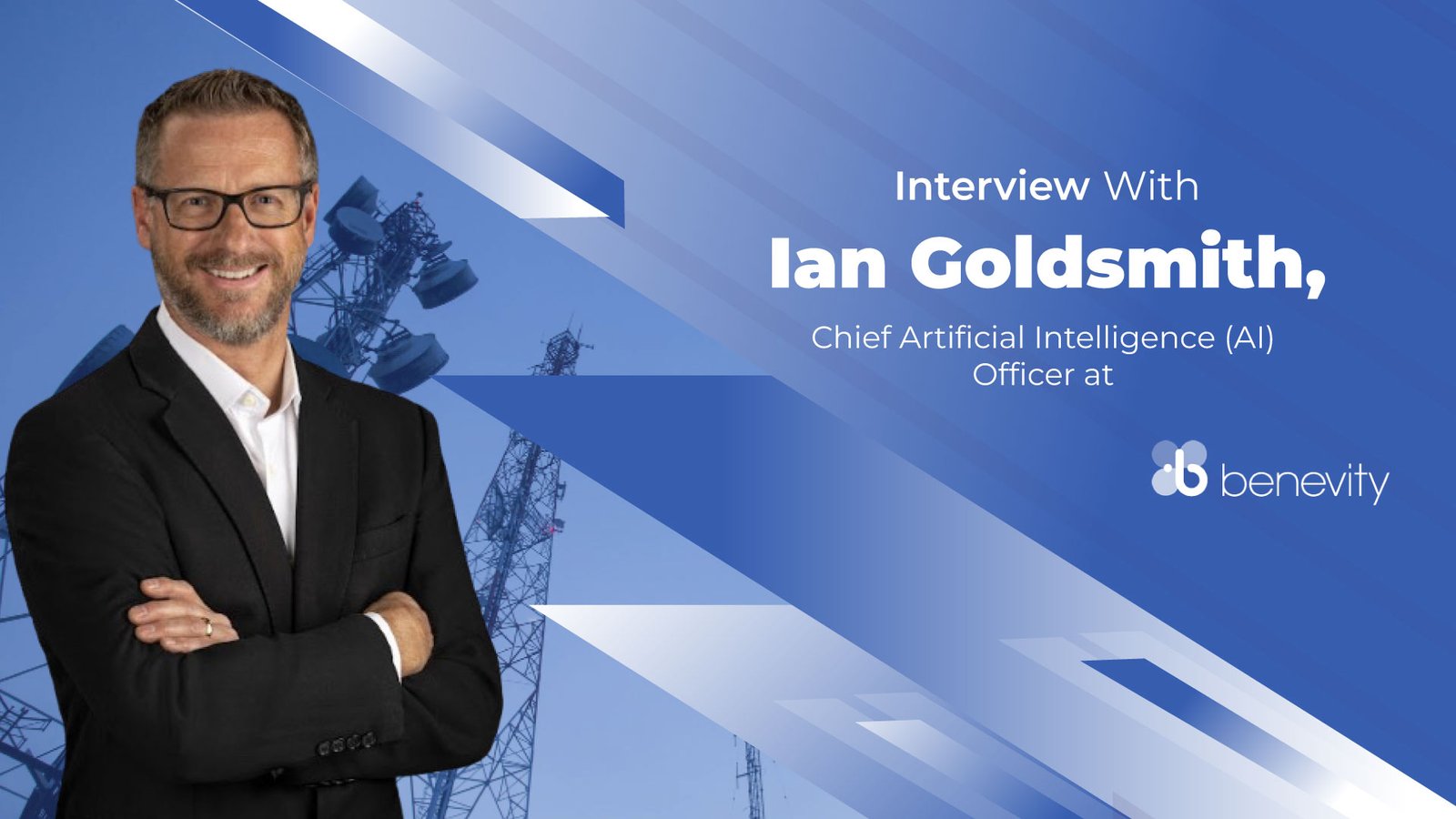Benevity’s CAIO shares how AI is transforming CSR, from personalized giving to impact-driven employee engagement.
To begin, could you please tell us about your professional journey and what led you to take on the role of Chief Artificial Intelligence Officer at Benevity?
I began my career in infrastructure and tools before transitioning into business applications, and have grown my expertise as a product management leader over the last 20+ years. Most recently, I served as chief product officer at Waycare, where I leveraged AI to help predict and prevent traffic fatalities. I’ve always been passionate about the intersection of technology and business transformation, and the pace at which AI is accelerating that change is truly extraordinary. That’s why the opportunity at Benevity – where I can help harness AI to power goodness in the world – was too good to pass up.
Walk us through the development of Benevity’s Enterprise Impact Platform (EIP). Why did your team feel this was the right time to introduce a platform like this?
Benevity’s platform is built on a robust infrastructure layer designed to scale securely and reliably, anchored by the world’s largest vetted nonprofit network. At its core is our nonprofit vetting and validation engine, which rigorously verifies over two million nonprofits and continuously monitors for fraud, regulatory and reputational risks. As a leader in corporate social responsibility (CSR) and social impact technology, we’ve consistently innovated to support both our clients and nonprofit partners. Now, we’re spearheading the next wave of transformation with an AI-enabled platform purpose-built to simplify and scale CSR programs with the launch of the Enterprise Impact Platform.
Firstly, from an administrative and efficiency standpoint, the platform is end-user friendly due to tools like AI-generated summaries, validation and approval assistance.
Additionally, engagement is AI-powered, utilizing content creation informed by data from hundreds of thousands of successful campaigns, millions of users and billions of dollars raised. Our AI agents further extend this power by assisting administrators and end-user activities with action-oriented support, enabling tasks like discovering new causes to support, opportunities to volunteer at and seamless donations.
In your recent State of Corporate Purpose press release, you mention that 82% of companies believe nonprofits need more corporate support to bridge the AI gap. How is Benevity stepping in to facilitate this support, and what role does AI play in strengthening these partnerships?
Benevity is facilitating corporate support to nonprofits by improving efficiency throughout the entire CSR process. This involves simplifying tasks such as grant writing and management, focusing on personalization at scale for employee and community engagement and leveraging data-driven decision-making – all to further scale initiatives that were already in place. We’re also driving both local and global impact; we’re analyzing global insights from aggregated data and implementing cross-border collaboration through intelligent systems to find hyper-local solutions for communities. Looking ahead, AI has incredible potential to make the small but mighty teams that drive CSR even more mighty with agentic assistants, content creation and optimized workflows. It can transform the way environmental, social and governance (ESG) is reported as well transform engagement by identifying impact and storytelling, driving more engagement by helping people understand how much impact they are able to have.
How is technology enhancing the user experience on Benevity’s platform—particularly when it comes to personalizing volunteering and giving opportunities for employees?
Technology is enhancing the user experience on Benevity’s platform through personalized content creation, impact identification and storytelling abilities make the user experience at Benevity thrive. End-user efficiency with AI-powered assistance further enhances the donation process and helps identify volunteering events as well as makes registration and time tracking even easier to do.
With growing momentum around employee activism and social responsibility, do you think AI-driven analytics can help companies stay ahead of emerging trends? Are you already seeing this play out in your work?
I believe AI can help analyze real-time data from internal communication channels (e.g., Slack, emails, forums), surveys and feedback forms and employee reviews to help leaders understand what their employees and consumers care about most. AI can detect emerging concerns, dissatisfaction or calls for action before they escalate. Examples include detecting growing discontent around diversity practice or flagging recurring concerns in anonymous feedback. Companies can then take these sentiments into account and use AI to then tailor volunteering, giving and advocacy programs based on employee interests, values or location.
As far as what we’ve seen happen already in our work, the 2025 State of Corporate Purpose study, found 76% of CSR leaders expect employee activism in 2025, reflecting growing internal pressure for companies to respond to social and political issues. We are personally proud to confirm that we have had 92% of Benevity‑ites participate in volunteering and giving in 2024, compared to a benchmark of 35% for companies with fewer than 1,000 employees. Generative AI can even help companies research and analyze policy changes and stay ahead of the trends by running these by their ERG groups to assess how to strategize moving forward. Finally, no matter how and what AI helps with, companies must run findings and assessments by their people, especially people who represent certain groups (ERGs are critical in this). This is a critical step before determining and implementing any strategy or response to an issue or emerging trend.
What’s your vision for the future of AI in CSR technology? How do you see the space evolving over the next five years?
In the near term, AI will remove friction from every layer of CSR operations, including grantmaking, volunteering, employee engagement, reporting and governance.
Conversely, in the long term, it will power a deeper cultural shift, turning CSR from a programmatic function into an intelligence-led strategic driver. Essentially, AI will help CSR evolve from transactional to transformational, meaning it will evolve from tactical acts (donations, volunteer days) to continuous, personalized experiences. AI will also be able to match employees with causes that align with their values and skills and volunteer opportunities will be curated using real-time context such as location, availability and team goals. Giving campaigns will also be co-created by AI and ERGs.
AI will also enable more intelligent grantmaking by summarizing applications, flagging risk and recommending fit based on historical impact. Nonprofits will gain access to AI co-pilots to better position their missions to companies, who will then provide support to underrepresented or grassroots organizations through bias-aware algorithms. Our model is a human-in-the-loop design where AI elevates decision-making, but never overrides community context or lived experience, which is why we are committed to continuing to embed responsible AI practices into every touchpoint: explainability, fairness and transparency.
From a personal strategy standpoint, how do you approach innovation and responsible AI deployment in a space as values-driven as CSR?
When approaching innovation and responsible AI deployment in a space like CSR, I truly believe it’s all about people: we need to ensure that we are working closely with our clients and their end-users to meet their goals. We understand the regulatory and ethical concerns around AI and are in the position of being trusted by our clients to ensure that we align with their values. Specifically, we have to make sure that we allow our clients to opt out of AI features where necessary, and that everything we do follows regulatory and ethical guidelines, including factoring in the ecological and environmental impact of AI into our implementation decisions.
Lastly, what advice would you offer to business and technology leaders who want to use AI to drive purpose-driven outcomes—and what’s next for you and Benevity in this evolving landscape?
My advice to business and technology leaders who want to use AI to drive purpose-driven outcomes would be to build an AI-powered network that benefits both nonprofits and businesses by keeping the focus on human actions that have a lasting impact. As I mentioned earlier, at Benevity, we are using AI to power a deeper cultural shift and evolve CSR from transactional to transformational, making the processes of donating and volunteering, more personalized experiences for our clients and communities. Overall, when companies leverage AI to benefit all parties involved, we can all ensure that our workplaces and communities feel supported and emboldened to continue doing the important work of spreading goodness in the world.

Ian Goldsmith
Ian Goldsmith is a seasoned product executive with more than 30 years of experience in product and data leadership. He believes AI isn’t just a feature but a transformative force that belongs at the heart of a company’s strategy. At Benevity, Goldsmith leads the strategic deployment of artificial intelligence throughout Benevity’s Enterprise Impact Platform, leveraging AI-powered analytics and generative AI to create transformative, scalable solutions that help companies realize greater business and societal value from their purpose initiatives.
Prior to joining Benevity, Goldsmith held senior leadership roles at MeridianLink, Waycare, and Akana where he honed his advanced AI strategy development for global brands while staying committed to responsible AI innovation and continuous learning. His work has delivered meaningful change with thoughtful integration of AI capabilities in product, data, and user experience across industries including technology, finance, and transportation. Goldsmith holds a Master’s degree in Computer Science from the University of Cambridge.

